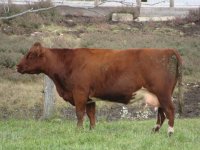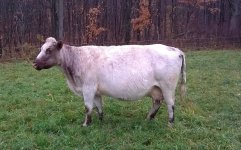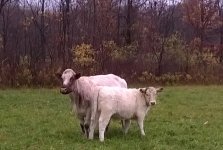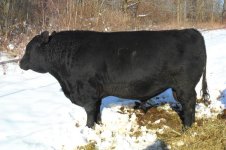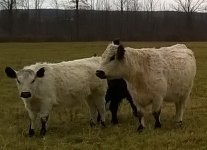35-40 years ago the ASA sponsored what was called a sire test. Breeders from across the country supplied a ranch, I believe in Wyoming, but cannot remember the name of it, with 50 units of semen on each bull. It might have been Padlock Ranch. Anyway, the western herd ran a large group of closely related black white face females. There were usually at least 20 bulls entered in the test. The resulting steer calves were sent to a feedlot in western Nebraska, near Brule, I think. The cattle were measured for weaning weight, ADG, and sent to slaughter with all carcass data recorded. As you can imagine, during the mid to late 70's, the Shorthorn bulls tested were an extremely diverse group. There was everything from very conventional type bulls to the largest framed dual purpose type available. I entered a dual purpose, double registered bull, Justamere Todd. He had won the beef shows at the Iowa and Minnesota State Fair, was senior champion at the International in Chicago, and reserve senior champion at Denver. He was a very large framed bull, weighing a very comfortable 2,500 pounds plus at maturity. As I remember the data from the carcass portion of the test, the larger framed, dual purpose type bulls were equally as high if not higher than the more conventional, smaller framed type bulls when measuring marbling ability of their calves in the test. The more conventional type calves had more external backfat, though. I toured the feedlot about two weeks before the cattle were slaughtered, and you could definitely tell a difference in the frame size of the cattle. Again, though, some of the larger framed cattle with certain genetics had more marbling and, at least in the case of my bull, were well above average in ribeye area along with above average ability to grade choice. I believe that selection pressure over the years, within and without a breed population, plays a more significant role in marbling abiiity than just frame score. Perhaps some of the larger framed cattle, though, were selected more for their growth, performance, and frame size than marbling. In my opinion, you can have large cattle that marble and small ones that don't. The trick is to not only select for the perfect one, but produce it. What makes it fun is that your perfect one is most likely different than mine.

